Baba Siddique murder: Police arrest fourth accused from UP’s Bahraich, cops say he provided…

Police had earlier arrested Haryana resident Gurmail Baljit Singh (23), Uttar Pradesh native Dharmaraj Rajesh Kashyap (19), both alleged shooters, and “co-conspirator” Pravin Lonkar from Pune.
EC announces Assembly election dates for Maharashtra, Jharkhand: Check full schedule, result date and more
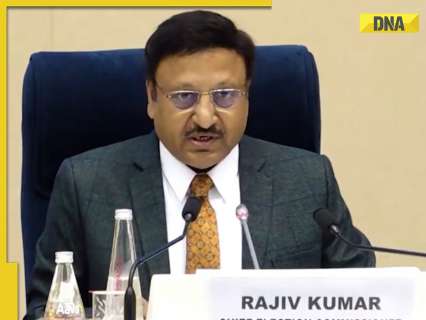
EC announces Assembly election dates for Maharashtra, Jharkhand.
A Texas rematch: Republican Mayra Flores aims to beat Democrat Vicente Gonzalez for U.S. House seat

Flores briefly represented the district after winning a 2022 special election. Gonzalez went on to beat her by nearly 9 points in the general.
Gov. Greg Abbott boasted that Texas removed 6,500 noncitizens from its voter rolls. That number was likely inflated.

An investigation by ProPublica, The Texas Tribune and Votebeat found that U.S. citizens were incorrectly labeled as noncitizens or removed from the rolls because they did not respond to letters about their citizenship.
A Panhandle town says goodbye to its newspaper

Watch this documentary about the final run of the Canadian Record, a small-town, family-owned newspaper that closed last year.
First on Fox: Top outside group backing Senate Republicans showcases fundraising haul
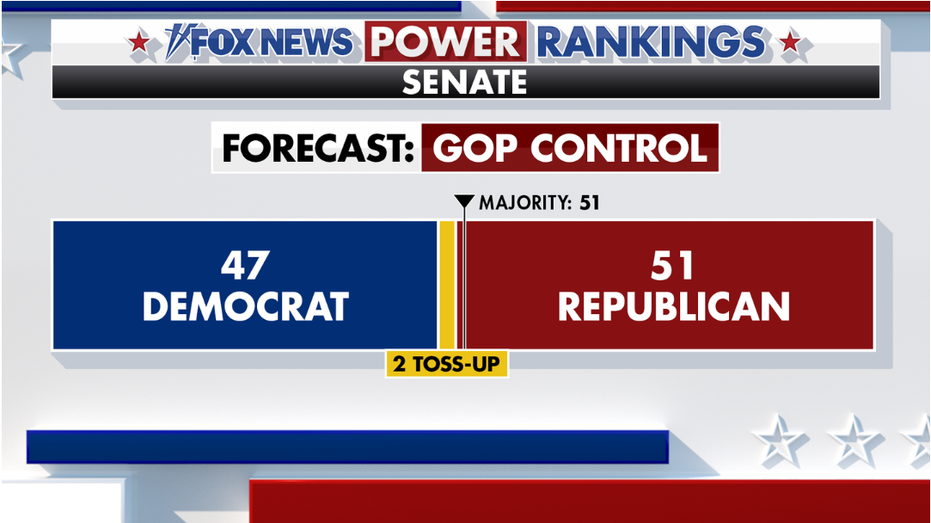
EXCLUSIVE – As the GOP fights to win back the Senate majority, the leading super PAC that supports Republican incumbents and candidates says it hauled in $114.5 million during the July-September third quarter of 2024 fundraising. And the Senate Leadership Fund (SLF), in sharing its fundraising figures first with Fox News on Tuesday, reports having $112 million cash on hand as of the end of last month. The group, which is aligned with longtime Senate GOP leader Mitch McConnell, noted that its fundraising the past three months included a $28 million contribution from One Nation, its allied non-profit organization. And SLF touted that its haul over the past three months brings to $181 million its fundraising for the entire 2024 election cycle – and that it has raked in more this cycle than it did at the same point in the 2022 midterms. WHAT THE LATEST FOX NEWS POLLS IN THE 2024 ELECTION SHOW “Our goal from the outset of the cycle was to win back the majority by helping recruit great candidates and raising enough money to help them compete against entrenched, well-funded Democrats. As we approach Election Day, our donors have continued to support our efforts in these battleground contests, and we’re grateful for their generosity,” SLF President and CEO Steven Law told Fox News in a statement. Democrats hold a slim 51-49 majority in the Senate, which includes three independent senators who caucus with the Democratic conference. SIX KEY SENATE SEATS THAT COULD FLIP IN NOVEMBER That means Republicans need a net gain of either one or two seats to win back the majority – depending on which party controls the White House after this year’s presidential election. The math and the map favor the GOP in 2024. Democrats are defending 23 of the 34 seats up for grabs. One of those seats is in West Virginia, a deep-red state that former President Trump carried by nearly 40 points in 2020. With moderate Democrat-turned-independent Sen. Joe Manchin, a former governor, not seeking re-election, flipping the seat is nearly a sure thing for the GOP. Republicans are also aiming to flip seats in Ohio and Montana, two states Trump comfortably carried four years ago. And five more Democrat-held seats up for grabs this year are in crucial presidential election battleground states. With Democrats trying to protect their fragile Senate majority, they received another headache in February when former two-term Republican Gov. Larry Hogan of Maryland launched a campaign for an open seat in the heavily blue state. SLF says that it and the allied group American Crossroads have reserved $228.5 million in television, radio and digital ads across Montana, Ohio, Pennsylvania, Wisconsin and Michigan and started spending that money as of Labor Day. The two groups are spending a combined $82.5 million in Ohio, where longtime Democratic Sen. Sherrod Brown is fighting for his political life against GOP challenger Berie Moreno, and $47.9 million in Montana, where polls indicate that Republican challenger Tim Sheehy holds a slight lead over Democratic Sen. Jon Tester. SLF is spending $52 million in Pennsylvania, where polls point to Republican nominee Dave McCormick closing the gap against Democratic Sen. Bob Casey. The group is also dishing out $23.6 million in a very competitive race in Wisconsin, where Republican Eric Hovde is challenging Democratic Sen. Tammy Baldwin, and $22.5 million in Michigan where former GOP Rep. Mike Rogers is facing off against Democratic Rep. Elissa Slotkin in the race to succeed longtime Democratic Sen. Debbie Stabenow. Get the latest updates from the 2024 campaign trail, exclusive interviews and more at our Fox News Digital election hub.
Taiwan reports surrounded by 153 Chinese military aircraft during drills
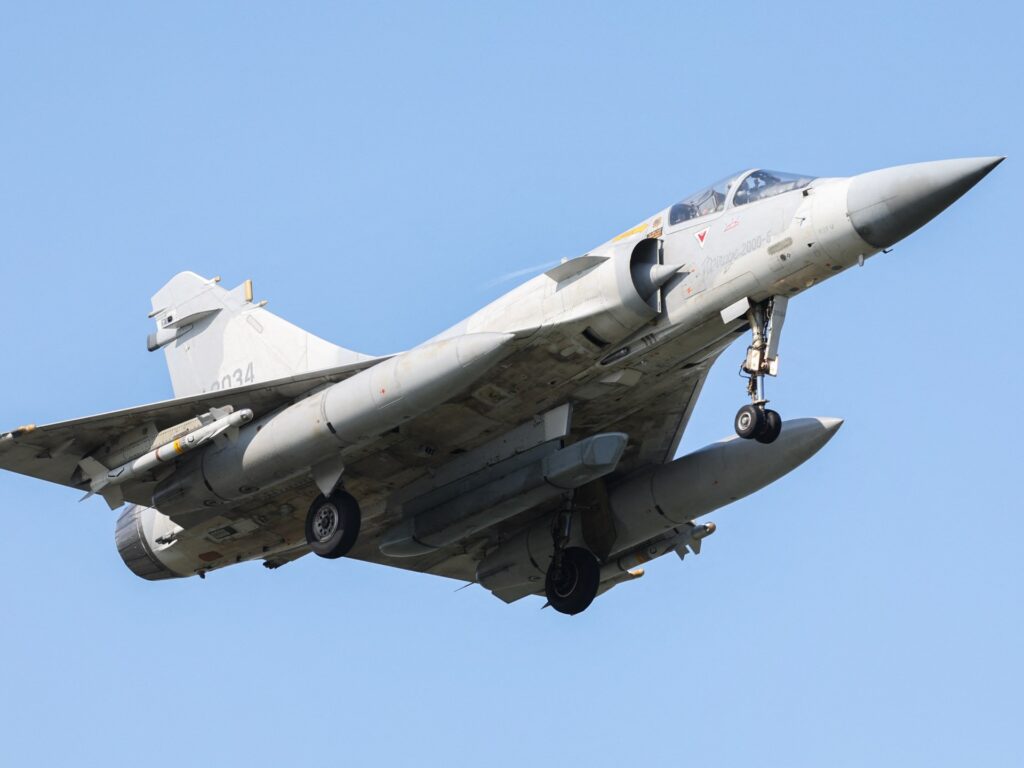
Exercises raise regional tension warns Taipei; US slams war games as it launches drills with Philippines. Taiwan detected 153 aircraft surrounding its territory as China carried out massive military exercises, according to the self-ruled island’s defence ministry. The “surge in warplane activity” saw a record number of aircraft spotted in the 25 hours to 6am on Tuesday (22:00 GMT, Monday), the Ministry of National Defense said in a statement. China’s war games have once more raised tensions with the island and across the region, it noted. Beijing deployed fighter jets, drones, warships and coastguard ships to encircle Taiwan on Monday. Taipei said it responded by dispatching “appropriate forces” and placing its outlying islands on heightened alert. The defence ministry said 90 of the Chinese aircraft were spotted within Taiwan’s air defence identification zone. ‘Nonsense’ Beijing considers Taiwan part of its territory and has said it would never rule out using force to take it. China said the one-day drill, designated “Joint Sword-2024B”, was a warning against “separatist acts”. The war games followed a National Day speech last week by Taiwan President William Lai Ching-te that Beijing had denounced. Lai said in the speech that China has no right to represent Taiwan and declared his commitment to “resist annexation or encroachment”. “This is a resolute punishment for Lai Ching-te’s continuous fabrication of ‘Taiwan independence’ nonsense,” China’s Taiwan affairs office said in a statement. Attracting attention Taiwan’s Premier Cho Jung-tai stated that the manoeuvres were not only a concern for Taipei, but for the entire region. “Any drills without prior warning will cause great disturbance to peace and stability in the entire region,” he told reporters. “China’s drills not only affect Taiwan’s neighbourhood, but also seriously affect the entire international navigational rights and air and sea space, so attracted the attention of other countries.” Taiwan’s Office of the President called on China to “cease military provocations that undermine regional peace and stability and stop threatening Taiwan’s democracy and freedom”. The United States, an ally to the self-ruled island, noted its concern, even as it launched its own war games in the disputed South China Sea. The Pentagon slammed China’s drills as “irresponsible, disproportionate, and destabilising”. However, thousands of US and Philippine marines launched 10 days of joint exercises in the Philippines, which is also locked in dispute with China, on Tuesday. The exercises are focused on defending the north coast of the main Philippine island of Luzon, which lies about 800km (500 miles) from Taiwan. Adblock test (Why?)
Families want justice, ‘blood money’ for AU peacekeeper killings in Somalia
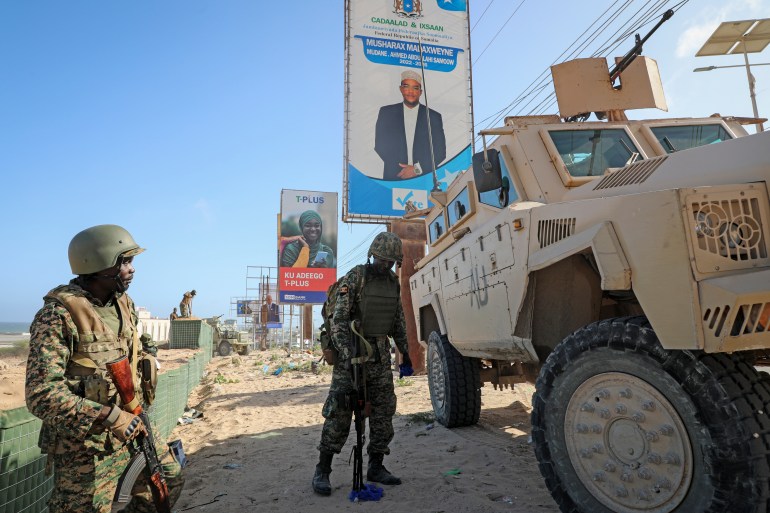
Omar Hassan Warsame was a larger-than-life figure in the Somali town of Golweyn, where his sizeable farm provided maize, bananas and jobs that helped sustain the community. The 65-year-old and a contingent of up to a dozen of his employees would tend to crops on the plot in the Lower Shebelle region, some 110km (68 miles) southwest of the capital Mogadishu – which helped spare locals from the effects of the region’s recurring droughts. On August 10, 2021, African Union (AU) peacekeepers from Uganda converged on the farm. Renowned as a community representative, it was not uncommon for businessmen or officials to approach Omar. But, for reasons that remain unclear, the soldiers opened fire on him and four of his employees. “They killed them in cold blood,” Mohamed Abdi, a nephew of Omar’s, told Al Jazeera. “He was a community leader. A kind, charitable man who provided for the poor and cared for all his neighbours. The whole city mourned with us.” Seven civilians were killed in the Golweyn massacre, which prompted outrage across Somalia. Demonstrators took to the streets in Mogadishu and towns in Lower Shebelle demanding the withdrawal of foreign peacekeepers from the country. Eventually, a Ugandan court martial sentenced two soldiers to death and three others to lengthy prison terms, before a Ugandan court threw out the death sentences. The peacekeepers belonged to the African Union Mission in Somalia, or AMISOM. They were first deployed in 2007 to prevent a takeover of the country by al-Qaeda affiliate al-Shabab, which seeks to overthrow Somalia’s government. While al-Shabab frequently engages in battles with peacekeepers and government forces, civilians have borne the brunt of its attacks. The armed group is estimated to have killed around 4,000 civilians in shootings, suicide bombings and other forms of violence between 2008 and 2020. AMISOM peacekeepers – composed of troops from countries in the region – were primarily tasked with countering al-Shabab’s influence, providing security in government-held areas and coordinating with fledgling Somali security forces. Backed by the United Nations, United States and other donor states, the AU peacekeepers have played a critical role in countering threats posed by the armed group. Ugandan peacekeepers with the African Transition Mission in Somalia (ATMIS) in Mogadishu, in May 2022 [File: Farah Abdi Warsameh/AP] But reports about their involvement in abuses against civilians can be traced back to their initial years in the country. Rebranded as ATMIS (African Union Transition Mission in Somalia) in 2022, and now planning an end-of-the-year withdrawal from the country, families of victims say the AU owes them justice and “blood money” – financial compensation for their suffering. “They’re supposed to be peacekeepers, but they murder civilians,” Omar’s nephew Mohamed told Al Jazeera. “What makes them different from al-Shabab then?” Compensation for victims Since the overthrow of President Siad Barre in 1991, Somalia has been plagued by internal fighting between rival strongmen, with a weak central government. Following the rise of the Islamic Courts Union (ICU), a political and military entity established by local Islamic law courts to govern the country, troops from neighbouring Ethiopia entered Somalia and drove the ICU from power in late 2006. The splintering of the ICU and the presence of Ethiopian troops, widely unpopular among Somalis for war crimes committed during fighting, fomented resistance. Eventually, hardliner elements of the former ICU went on to establish al-Shabab. International efforts to stabilise the country led to the establishment of the AU’s peacekeeping mandate in 2007. Ethiopian troops withdrew the bulk of their forces by early 2009 but always maintained a troop presence in Somalia, before merging them with the AMISOM force by 2014. Somalia’s international partners have invested billions into upgrading the country’s security apparatus. The national army’s ability to independently take on al-Shabab has increased over time, and the once-looming threat of an al-Shabab takeover of the capital Mogadishu has diminished considerably. But despite the nearly two-decade-long presence of African peacekeepers whose numbers have previously reached 20,000, swaths of the country remain under al-Shabab control, and government security forces struggle to expand their reach. The group’s capacity to carry out deadly attacks on civilian and military targets has hardly waned. In August, a suicide bombing and gun attack targeted beachgoers at the popular Lido Beach in Mogadishu, killing at least 32 people. With little in terms of concrete results on the ground, donor fatigue has led to cutbacks, including a reduction of $60m last year by the European Union. Funding shortages are reportedly among the reasons ATMIS plans to depart Somalia by the end of this year. Despite the financial woes, the EU successfully delivered $200m in funds meant to compensate the families of the estimated 3,500 AU peacekeepers who have died in Somalia since 2007. Mohamed El-Amine Souef, the current head of ATMIS [File: Fethi Belaid/Pool/AFP] But there is nothing earmarked for victims of peacekeeper violence, something ATMIS officials have tried to explain to the families. “Out of courtesy, I met with [family members] and explained that the consensus is that ATMIS is struggling financially to the point where we had to consider terminating the mission,” Comorian diplomat and current ATMIS political head Mohamed El-Amine Souef explained in a voice message sent to Al Jazeera. “As such, the matter of compensation is being jointly dealt with by Addis Ababa and Mogadishu and a technical team that deals with judicial and compensation-related matters.” Souef did not respond to follow-up questions on how a joint initiative between two governments whose bilateral ties are currently at their lowest in decades – over Ethiopia’s controversial plans to recognise the breakaway republic of Somaliland – was made possible. Last year, Souef told Voice of America that ATMIS needed at least $2m from donors to cover compensation requests in almost 80 cases of peacekeeper violence against civilians. These cases include killings, as well as critical and minor injuries, but the AU has not specified how many of each. Who can be held accountable? On August 12, 2017, following a battle with al-Shabab in the
To boost Ukraine’s army, feared patrols hunt for potential conscripts
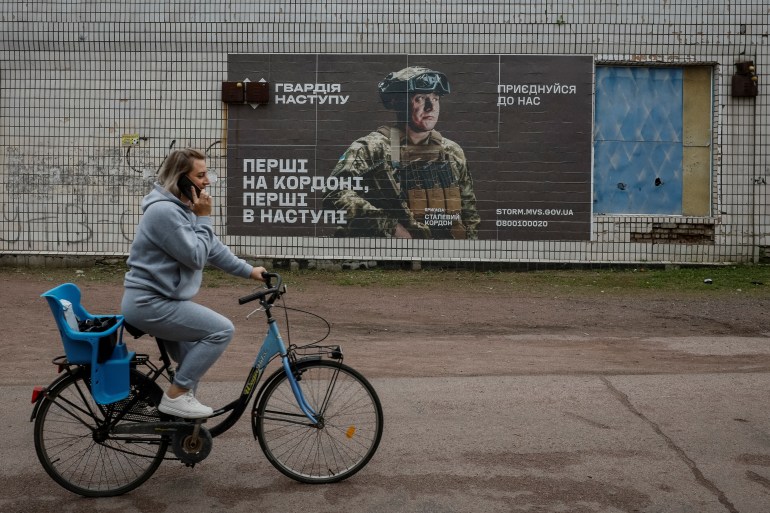
A stone’s throw from advancing Russian troops, Volodymyr refuses to leave his eastern Ukrainian town. The daily Russian pummelling has killed some of his neighbours and destroyed buildings around his house, but the 34-year-old does not want to move to a safer area because he would be forcibly conscripted. “I’ll be herded back home but with a gun in my hands,” he told Al Jazeera as fighting raged just 10km (6 miles) away. He has no qualms about what Ukrainian generals might call unpatriotic behaviour. “Way too many guys” he knows have been killed, wounded and incapacitated since 2014 when Russia-backed separatists sparked a conflict in eastern Ukraine that killed more than 13,000 people, about a quarter of them civilians, and displaced millions. A local resident rides a bike near a recruitment advert for the Ukrainian army, amid Russia’s attack on Ukraine, in the village of Hrushivka, in Ukraine’s Dnipropetrovsk region [File: Alina Smutko/Reuters] Casualties soared after Russia’s full-scale invasion began in 2022. Russian army chiefs have no misgivings about the loss of tens of thousands of their servicemen for each Ukrainian town they take, mostly in the Donetsk region, where Volodymyr lives. But he accused Ukraine’s top brass and front-line officers of adopting a somewhat similar approach. “The commanders care about their bosses’ opinion, not about the men serving under them,” he said, citing conversations with his enlisted friends. He and other men interviewed for this story asked for their last names and personal details to be withheld because they fear reprisals. Feared patrols search for conscripts About 1.3 million Ukrainians serve in the military. At least 80,000 soldiers of eligible age, 25 to 60, have died since 2022, according to Western estimates. President Volodymyr Zelenskyy’s government does not divulge the official death toll. He has said the army needs to enlist 500,000 out of about 3.7 million men of fighting age who are eligible for service. These days, many potential recruits all over Ukraine think twice before leaving their homes. If they do, they look over their shoulder for “man-hunting” patrols. Each patrol consists of police and conscription officers, groups of four to six officials that comb public areas such as subway stations, bus stops, shopping malls, city and town centres. They have also operated at rock concerts, nightclubs and pricey restaurants. Al Jazeera has witnessed the work of several such patrols. Each time, the officers refused to comment and be photographed. They approach any man in sight to check his ID and conscription document, a printout or a scan in a mobile phone that has a QR code. The code gives access to the man’s “conscription status” in a central database. That status had to be updated by mid-July when a conscription law took effect after months of deliberations and thousands of amendments. Every potential conscript had to provide details on his address, contacts, health, prior military service, and ability to handle weaponry, military equipment and vehicles. At the time, hours-long lines formed in front of conscription offices where staff were often interrupted by air raid sirens and blackouts caused by Russian strikes on energy infrastructure. In May, the government launched Reserv+, an app allowing Ukrainians to update their conscription status from their mobile phones. Those who did not now face punishment – their driving licences could be revoked or bank accounts frozen. If potential conscripts live abroad, consular services could be denied. ‘They round people up randomly’ Vitaly, a 23-year-old Kyiv native who studies engineering at a German university, was denied services at a Ukrainian consulate, his mother told Al Jazeera. He was told to ignore the app and return to Kyiv to “personally” update his status, she said. “Of course, he didn’t because they wouldn’t let him go back” to Germany, she said. “That’s how Ukraine lost one more national” because her son now plans to apply for German citizenship after graduation, she said. Back in Ukraine, the patrols are feared by some. “They round people up randomly, pack them into minibuses,” Boris, a 31-year-old man from the northeastern city of Kharkiv, told Al Jazeera. He said the patrols are able to detain men without checking their papers. “Five or six [officers] twist one’s arms and, oops, tomorrow you’re at the Desna boot [camp]” in the northern region of Chernihiv, he said. Boris could be immune to conscription if he becomes a legal carer for his disabled father, who had a heart attack this year. But he is afraid to even set foot in a conscription office with the paperwork. “People walk in there and end up in Desna a day later,” he said, referring to the camp Russian forces struck in May 2022 with two missiles, killing at least 87 conscripts. In late August, an official on patrol detained Andriy, a 27-year-old resident of Kyiv, as he was entering a subway station. A doctoral student who cannot be drafted, Andriy showed his QR-coded card. But he was forcibly taken to the nearest conscription office, where officers told him he would be on his way to a boot camp “within an hour”, he told Al Jazeera. “They pressured me skillfully,” he said. “It’s an assembly line of coercion.” But then a medical doctor refused to sign Andriy off because of myopia and astigmatism, and he was let go to get “additional paperwork”, he said. “It was a miracle,” he said. Violence and corruption There have also been multiple reports of violence towards potential conscripts. In late May, Serhiy Kovalchuk, a 32-year-old man, was beaten in a conscription office in the central city of Zhitomir and died in hospital six days later, his family told the Suspilne television network. Officials said Kovalchuk suffered a head trauma during an epileptic fit after several days of heavy drinking. Frequent violent detentions and the denial of access to the lawyers of potential conscripts constitute human rights abuses, according to Roman Likhachyov, a lawyer and member of the Center for Support for Veterans and Their Families, a group in
India signs Rs 32,000 crore mega deal for 31 Predator drones from US
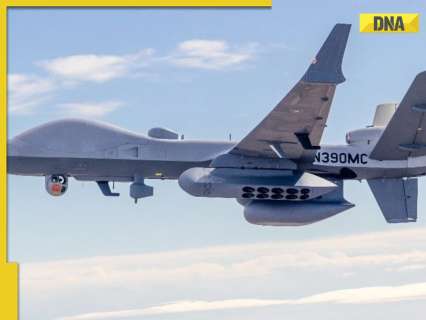
The deal, signed in the presence of top defence and strategic brass of India in the national capital, marks a significant upswing in military ties between the two countries, officials told PTI.
